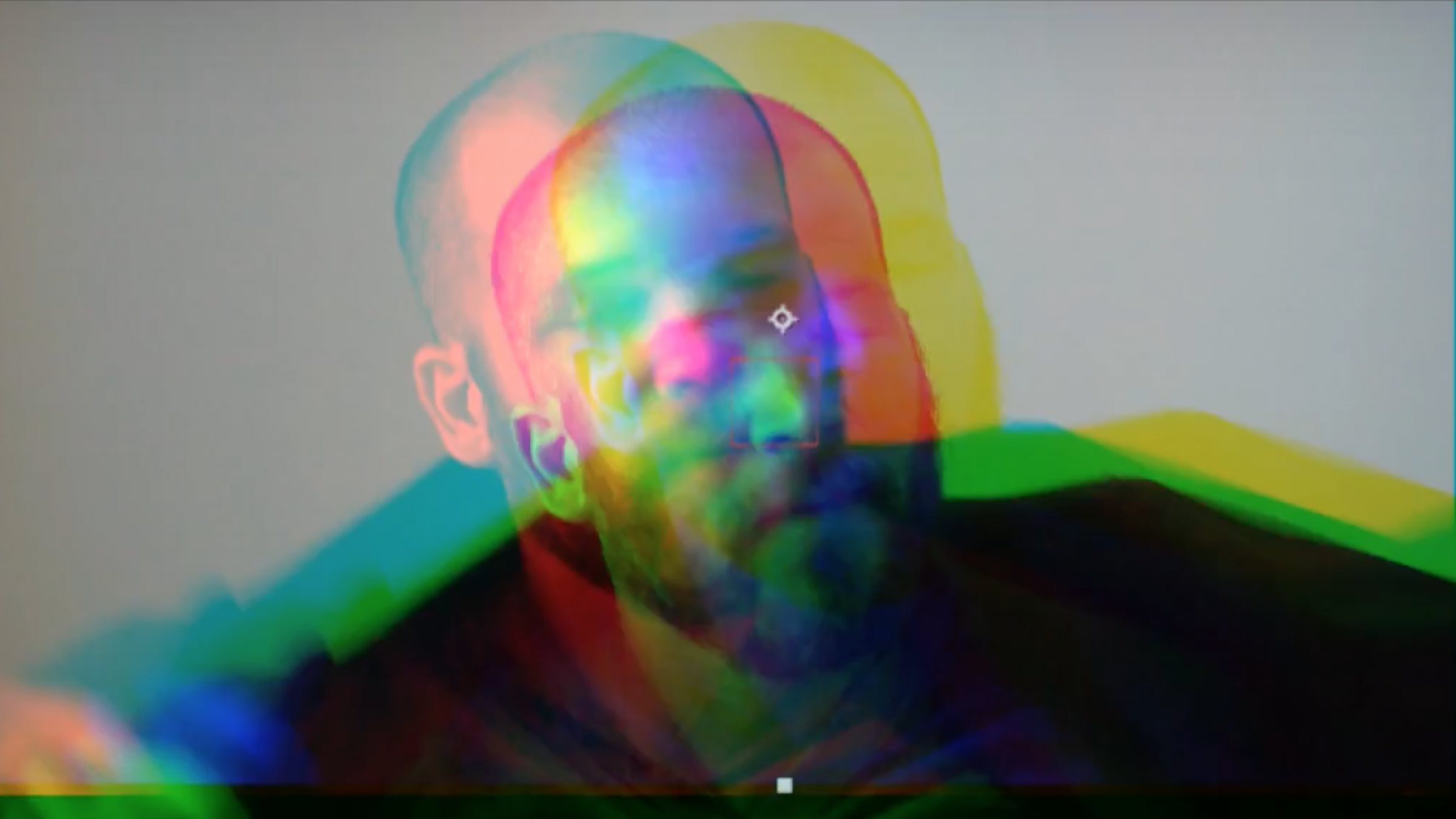Beter times are coming
An audiovisual interactive installation that reproduces the ticking sound of a clock. Visually, it mirrors the exhibition space and the possible audience inside of it. The piece is a time-space exploration that reacts to the movement of the audience.
produced by: Camila Colussi
Technical description
A Kinect 360 senses the distance to the closest point in space. Sound and graphics are altered by the movement of the audience.
Sound timing and acoustics are worked in Max.MSP. While you get closer to the camera, the sound gets slower and full of reverb.
Graphic manipulation is developed in openFrameworks. The transmission of real-time recording is modified into several graphic delays. The number of division delay is in relation to the distance sensed by the Kinect. As you get far away from the sensor, you get more divisions on screen. The opposite happens as you get closer to the sensor. If you get close enough, video and text appear.
The project
Walter Benjamin in “Theses on the Philosophy of History” (Walter Benjamin, 2012), questions the concept of History as a lineal and consequent narrative of facts. Benjamin writes at the specific moment of the Nazi in Europe. From his perspective, fascism can’t be the only possible and consequence reality. He claims more from History. Therefore, he proposes the possibility of inspected and infinite futures. Let’s look back and consider different perspectives that could re-write the present. If every past could be, every future can be.
At the current civil Chilean revolt (2019-), the anger against injustice has called to stop the present. We do not allow this present anymore. We are going to change the rules. We are going to change the future. Claiming for a different story. Better times are coming. The hope that rises the fight.
“Better times are coming” is based on art research initiated in 2018. It starts as an approach to Benjamin’s claim and scientific time-space theories(Arthur Zajonc, 1995). It considers “Moments” video series as well as the experimental exercise “TimeMachine” (Colussi, 2018). The current approach (2020) updates the exploration into new research about the concept of “democracy”. Under this intersection “Better times are coming” embraces the contingency of the recent protest movements and the hope for a new future.
Einstein and his theory of Relativity opened the conceptions of time-space and linked them to the subject. The movement of the subject of reference is in co-relation to time-space. No more stable objectivity. The universe looks flexible. The present project seeks to create a mirror image of the subject in which he/she crosses different times-space experiences. The possibility to enter into more or less time-space divisions are given by the subject movement through sensing space with a Kinect 360. This switch into different image divisions usually provokes glitch, which contributes to an unstable narrative. Moreover, the camera image presents a continuous colour channel deviation. Even when you are still, your image is never one “true” version of it.
Sound has a particular implication for this distorted speculation of time-space experience. Acoustics could talk about the qualities of a particular space: bigger distances usually trigger bigger amounts of reverb and eco; smaller spaces, on the contrary, sound dry. You could have a space experience through the manifestation of sound. Besides, the audio of the piece corresponds to the ticking of a clock, which gets slower or faster as the audience moves across space.
At a certain distance of the audience in space, video and text appear over the mirror image. It corresponds to:
Text: “Better times are coming”
Video: Fragment of “Moments” video series.
Text quote: “For him the dead are not truly dead but merely wounded or ill, and we have an ethical obligation to use our faculty of reason to develop the necessary knowledge, science, and technology to rescue them from the disease of death, to bring them back to life. From this point of view history and the past is a field full of potential: nothing is finished and everyone and everything will come back, not as souls in heaven, but in material form, in this world, with all their subjectivities, memories, and knowledge.”(Baere, 2017, p. 10).
In terms of exhibition performance, the installation has been thought to be projected on the wall and to sound through speakers in the open space.
Technical support
openFrameworks
Max.msp
Kinect 360
Code
Max.Msp patch was created from scratch.
openFrameworks code was created from scratch + codeExample from class “Computer Vision: Kinect” dictated by Theo Papatheodorou, Workshops in Creative Coding 2, Department of Computing, Goldsmiths University of London.
Visual references
References
Arthur Zajonc, 1995. Atrapando la luz. Historia de la luz y la mente., Segunda. ed. Editorial Andrés Bello.
Baere, B. de (Ed.), 2017. Art without death: conversations on Russian cosmism, E-flux journal. Sternberg Press, Berlin.
Walter Benjamin, 2012. La obra de arte en la era de su reproductividad técnica y otros textos, Colección Exhumaciones. Ediciones Godot, Buenos Aires, Argentina.



































































